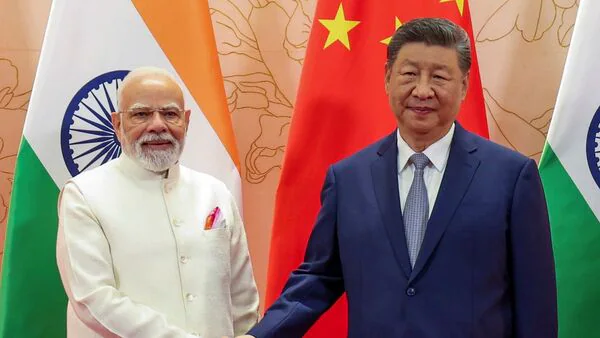
India, China Hold Fresh Talks On Management Of Border's Western Section Amid Slow Thaw In Ties
The latest discussions were held on Saturday on the Indian side of the meeting point, focusing on improving coordination and managing sensitive zones along the Line of Actual Control (LAC).
India and China pledge to sustain dialogueBeijing said the meeting reaffirmed the commitment of both militaries to avoid misunderstandings and preserve stability in the western sector.
Also Read | Putin warns Trump tariffs on India, China may backfire on US economyIndia's Ministry of External Affairs has yet to issue a statement, but officials have previously characterised recent talks as“constructive” and conducive to easing long-standing border frictions.
Talks build on July meeting in eastern LadakhIn July, India and China held discussions along the LAC in eastern Ladakh, which China described as“candid.”
Following that round, New Delhi said it was“satisfied with the general prevalence of peace and tranquillit in the border areas,” calling the talks a positive step toward the gradual normalisation of ties.
India and China see gradual thaw, continued cautionThe renewed engagement comes amid a slow thaw in relations since the deadly Galwan Valley clash in 2020. While several friction points remain unresolved, both countries appear focused on maintaining calm through sustained dialogue and confidence-building measures. The next round of talks is expected later this year.
Also Read | IndiGo to resume India-China flights this month: Check detailsIndia and China share one of the world's most complicated relationships. The two most populous nations remain regional rivals that fought a border war in the 1960s, and ties have remained strained since the deadly 2020 clashes that killed soldiers on both sides.
Despite their political and military friction, economic interdependence continues to grow. China supplies key technology and materials critical to India's manufacturing ambitions, while India's expanding middle class offers an increasingly important consumer market for Chinese goods.
Since former US President Donald Trump's trade war with both countries, New Delhi and Beijing have stepped up efforts to stabilise relations. In late August 2025, Indian Prime Minister Narendra Modi visited China for the first time in seven years to attend a security summit, signalling a potential reset in ties.
Also Read | H-1B visa fee shock: What it means for India, China, and the US?At the end of October, the first passenger flight between India and China departed from Kolkata, five years after direct services were suspended. The restored route is expected to strengthen bilateral engagement through increased tourism, education, and business travel.
Relations had previously hit a low point after the 2017 Doklam standoff and again in 2020 during the Galwan Valley clash in Ladakh. In response, India suspended tourist visas for Chinese nationals, imposed restrictions on Chinese technology, and banned apps such as TikTok. It also rejected billion-dollar investment proposals from automakers BYD and Great Wall Motor, while moving closer to the United States amid its growing rivalry with China.
Also Read | Telling India to 'stop doing what I don't like' won't work: Russia on US tariffsSuspicions continued to simmer this year after Pakistan claimed Chinese-made J-10C jets were used to shoot down Indian aircraft during a brief conflict. India accused China of providing its neighbour with defence and satellite support. Beijing, meanwhile, has grown wary of India's efforts to attract manufacturing investment, tightening controls on skilled labour and recalling Chinese staff working in India.
Still, trade has proven resilient. China remains India's second-largest trading partner after the United States, with bilateral trade reaching $127 billion last year - $109 billion of which came from Chinese exports. The data underline how economic necessity continues to anchor one of Asia's most uneasy relationships.
Legal Disclaimer:
MENAFN provides the
information “as is” without warranty of any kind. We do not accept
any responsibility or liability for the accuracy, content, images,
videos, licenses, completeness, legality, or reliability of the information
contained in this article. If you have any complaints or copyright
issues related to this article, kindly contact the provider above.

















Comments
No comment